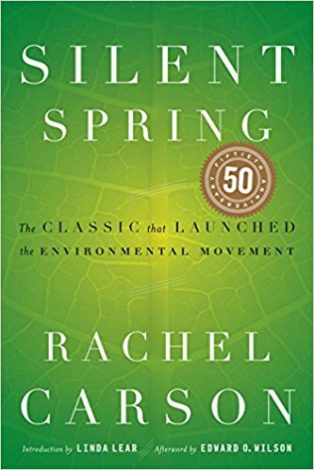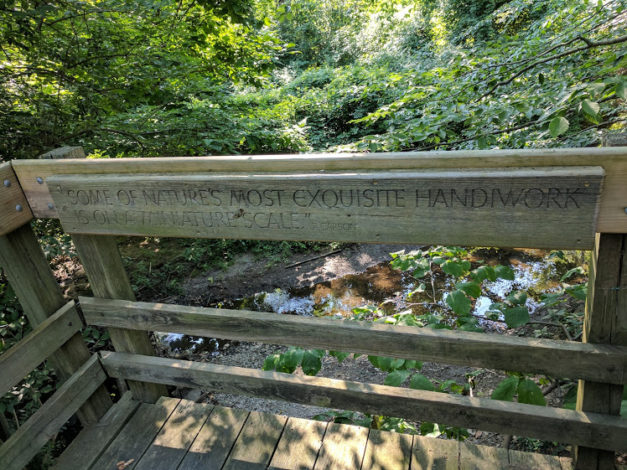Conservationist Series - Rachel Carson
This is a continuation of our conservationist series. Each post will detail a conservationist’s life, notable accomplishments and ways the conservationist connects to kids. This post features Rachel Carson.
 Rachel Carson speaks before the Senate in 1963. Photo credit: United Press International
Rachel Carson speaks before the Senate in 1963. Photo credit: United Press International

 "Some of nature's most exquisite handiwork is on a miniature scale." - Rachel Carson
"Some of nature's most exquisite handiwork is on a miniature scale." - Rachel Carson
 Rachel Carson speaks before the Senate in 1963. Photo credit: United Press International
Rachel Carson speaks before the Senate in 1963. Photo credit: United Press International
BIOLOGIST. AUTHOR. ECOLOGIST. EDUCATOR. CONSERVATIONIST.
Rachel Carson is best known for her book Silent Spring. In this book, Carson called for a change in the way humankind viewed the natural world. She challenged the use of DDT, citing the harm it causes for humans and the environment.WHO IS RACHEL CARSON?
Rachel Carson was born in Springdale, Penn. on May 27, 1907. An author early on in life, Carson won her first writing award at age 11 for a story published in St. Nicholas Magazine. Carson later attended Pennsylvania College for Women, now Chatham University, with intentions of majoring in English and becoming a teacher. After graduation, Carson attended Johns Hopkins University's Department of Zoology, where she would later teach. She earned her master of arts degree. Additionally, she planned to pursue her doctorate in marine biology at Johns Hopkins. This was during the Great Depression, and due to a lack of funds, Carson was forced to drop out of the program. After leaving school, Carson worked as a features writer for the U.S. Bureau of Fisheries in the Department of Commerce. She wrote 52 short radio programs on marine life titled "Romance Under the Waters." She also began freelance writing for other publications, including The Baltimore Sun and Atlantic Monthly. By June of 1939, Carson was working as assistant aquatic biologist in the Department of Commerce while continuing her writing career. While continuing to work her way up in the Department of Commerce, Carson published her first book, Under the Sea-Wind. She continued to have her writing published in popular magazines, including Reader's Digest. Carson had a breast tumor removed in 1950, but no further treatment was suggested. In 1951, Carson resigned as a biologist to concentrate on writing full-time.
ACCOMPLISHMENTS AND LEGACY
Rachel Carson is perhaps most well-known for her book Silent Spring. Published in 1962, Carson aimed to educate the public on the dangers of misusing pesticides. Carson spoke out about the dangers despite being attacked by the chemical industry as an alarmist. Carson testified before Congress in 1963 and called for new policies to protect the environment and human health. Unfortunately, she died from breast cancer in 1964. However, her legacy will remain in the fact that Silent Spring resulted in the banning of DDT and allowed for changes in laws regarding the air, land, and water.CONNECTING TO KIDS
- Before Rachel Carson's death, she was working on a book called The Sense of Wonder. In this book, she encouraged parents to explore nature with their children. Some activities to live out this book's mission include scavenger hunts and nature books, can be found here.
- Find a Rachel Carson biography for kids here. After reading the biography, you can test your knowledge with a quiz.
- Try a picture book with younger kids: Rachel Carson and Her Book that Changed the World and Listening to Crickets: A Story about Rachel Carson are both good options
- View a short video on Rachel Carson through Brain Pop (this is a subscription-based site).
 "Some of nature's most exquisite handiwork is on a miniature scale." - Rachel Carson
"Some of nature's most exquisite handiwork is on a miniature scale." - Rachel Carson
QUICK FACTS
- Rachel Carson was awarded the Presidential Medal of Freedom in 1980 by President Carter.
- Carson was featured on a postage stamp in 1981.
- Many people credit Carson and her books for creation of the Environmental Protection Agency.
Related Content




Comments